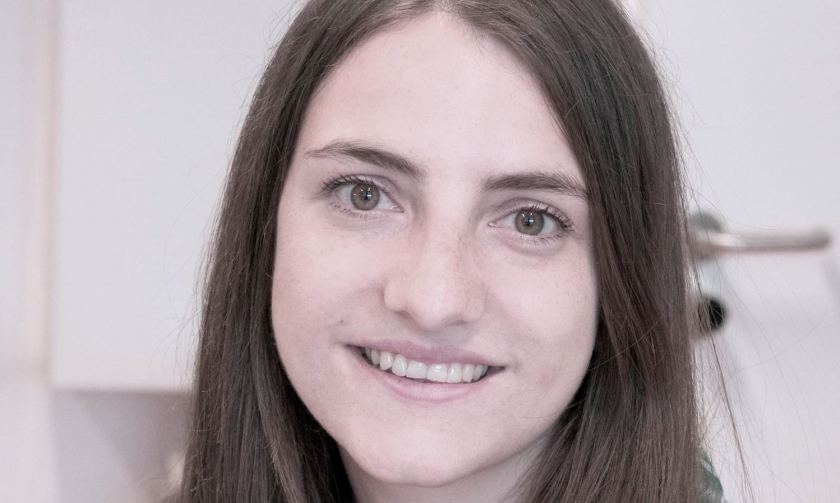Outstanding master thesis on the structure and function of a bacterial enzyme honoured

Lena Graß has received an award by GBM for her master thesis. © FU Berlin
On December 17, 2018, Lena Graß, a PhD student from the Structural Biochemistry Group at Freie Universität Berlin, was awarded the Master Prize of the Gesellschaft für Biochemie und Molekularbiologie e.V. (Society for Biochemistry and Molecular Biology) (GBM). For her master thesis at Freie Universität Berlin and the MX beamlines of BESSY II, she deciphered the structure and function of a so-called RNA helicase.
These bacterial enzymes can alter the activities of RNA molecules and influence the life cycle of bacteria. As part of her master's thesis, Lena Graß investigated a RNA helicase from the intestinal bacterium Escherichia coli. A closely related enzyme from the bacterium Borrelia burgdorferi, the causative agent of borreliosis, is essential for the infectivity of these bacteria. A better understanding of this enzyme could help to develop new drugs to block the enzyme.
Graß produced the enzyme using genetic engineering methods. Using macromolecular X-ray crystallography on the MX beam tubes of the Joint Berlin MX Laboratory at BESSY II, Graß was able to elucidate how the enzyme is constructed and folded in detail.
Graß began her master's degree in biochemistry at the Eberhard Karls University of Tübingen in 2015 and completed her master's thesis in the structural biochemistry group of the Freie Universität Berlin in cooperation with the macromolecular crystallography group at the Helmholtz-Zentrum Berlin. At the beginning of 2018, she completed her master's degree with the highest grade. She is currently doing her doctorate in the structural biochemistry group at Freie Universität.
red.
https://www.helmholtz-berlin.de/pubbin/news_seite?nid=20262;sprache=en
- Copy link
-
Battery research with the HZB X-ray microscope
New cathode materials are being developed to further increase the capacity of lithium batteries. Multilayer lithium-rich transition metal oxides (LRTMOs) offer particularly high energy density. However, their capacity decreases with each charging cycle due to structural and chemical changes. Using X-ray methods at BESSY II, teams from several Chinese research institutions have now investigated these changes for the first time with highest precision: at the unique X-ray microscope, they were able to observe morphological and structural developments on the nanometre scale and also clarify chemical changes.
-
BESSY II: New procedure for better thermoplastics
Bio-based thermoplastics are produced from renewable organic materials and can be recycled after use. Their resilience can be improved by blending bio-based thermoplastics with other thermoplastics. However, the interface between the materials in these blends sometimes requires enhancement to achieve optimal properties. A team from the Eindhoven University of Technology in the Netherlands has now investigated at BESSY II how a new process enables thermoplastic blends with a high interfacial strength to be made from two base materials: Images taken at the new nano station of the IRIS beamline showed that nanocrystalline layers form during the process, which increase material performance.
-
Martin Keller elected new president of the Helmholtz Association
The Helmholtz Association has appointed internationally respected US-based scientist Martin Keller as its new president. Her has lived in the United States for nearly three decades, during which he has held various scientific leadership roles at prominent institutions. Since 2015, Keller has directed the National Renewable Energy Laboratory (NREL) in Golden, Colorado. His term begins on 1.11. 2025.
